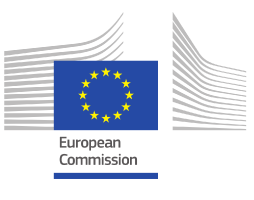Digital transformation has been a hot topic for well over five years, enveloping every industry and seeping into every corner of the enterprise. While many HR functions are already well advanced in the journey of digital transformation, the global mobility function seems to be the bad pupil of the class.
The global mobility function is often criticised for being too slow to digitise many of its manual processes, and the adoption of cutting edge technology is minimal in most organisations. It’s not uncommon to see enterprise-level global mobility teams still running operations with Excel spreadsheets and manual processes.
This apparent lack of interest in technology is surprising as numerous processes connected to international mobility lend themselves perfectly to a digital improvement and can be automated.
The traditional approach to shadow payroll
As an example, let’s have a look at employment tax process for mobile workforce commonly known as the shadow payroll. This process contains perhaps the greatest amount of administrative activity of any HR process, with monthly shadow payroll calculations demanding accuracy, timeliness, and well-planned coordination across multiple organisational entities.
The shadow payroll process is a combination of repetitive manual tasks where each department is reliant on the next to complete the manual shadow payroll calculation and necessary monthly reporting. This makes shadow payroll prime candidate for automation.
Five key drivers for automation in the shadow payroll:
- Data collection and consolidation: the shadow payroll process is composed mainly of copy and paste of information from one system to another or from one department to another (global mobility, global payroll, tax, finance), which makes the process very manual, time consuming and prone to errors.
- Continuous volume and handle time: the value of automation increases with the increase in volume and handle time of processes. The shadow payroll process is a monthly process and the volume is based on the number of international employees (number of international employee x 12 months = number of annual transactions – e.g. 200 expats x 12 = 2400 separate annual calculations).
- Accuracy and reliability: delivering accurate monthly shadow payroll calculations is key and those calculations must be executed 100% of the time in accordance with local tax regulations.
- Lack of visibility: the traditional shadow payroll process is often very fragmented with no central repository of employment tax data, which prevent companies from accessing timely and accurate employment tax data.
- Inter-departmental communication: the shadow payroll process is highly dependent on the communication flows between HR functions. Global mobility, global payroll, tax and finance departments are reliant on each other to complete the manual shadow payroll calculation and necessary monthly reporting.
The value of shadow payroll digital transformation
Considering, the key characteristics of the shadow payroll as just described, by automating and digitising the shadow payroll process, global mobility leaders could improve operational effectiveness and deliver bottom-line savings.
Savings opportunities
Apart from the obvious operational improvement advantages, digital transformation can present also significant and tangible opportunities to generate bottom-line savings across the shadow payroll process.
- Optimise tax positions
- Avoid fines and double taxation
- Reduce operational costs
- Enable timely tax deductions
- Improve cash flow
Operational improvement
Automating manual processes provides immediate improvements in operational efficiency, productivity, availability, and performance. Here are the typical areas where digital transformation can play an important role to enhance the overall shadow payroll process:
- Automated data upload and sense check
- Global visibility of tax costs
- Accuracy in shadow payroll calculations
- Real-time calculations and reporting
- Integration with corporate tax structure
This illustration shows the benefits your organisation can achieve by taking advantage of the Certino employment tax intelligence platform.
Shadow payroll is a major candidate for digital transformation
The way traditional shadow payroll process is handled today is inefficient and costly, both in terms of resource allocation and the increased risk of human error.
Due to its repetitive, rules-based nature, shadow payroll is a major candidate for digital transformation, as an automated approach provide the opportunity to achieve operational excellence and create savings opportunities simultaneously.
Digital transformation presents a rare opportunity to simultaneously improve the consistency and quality of service in shadow payroll while also driving down the total cost of delivery.
Global mobility, payroll and tax leaders should therefore be excited at the possibilities that the Certino automated shadow payroll platform can offer. The initial implementation process typically takes just twelve weeks and significant payback can be realised within the first year through multiple efficiencies with up to 20% savings in international employee tax and 50% on the cost of managing the shadow payroll.

-1.png)
.png)
.png)




